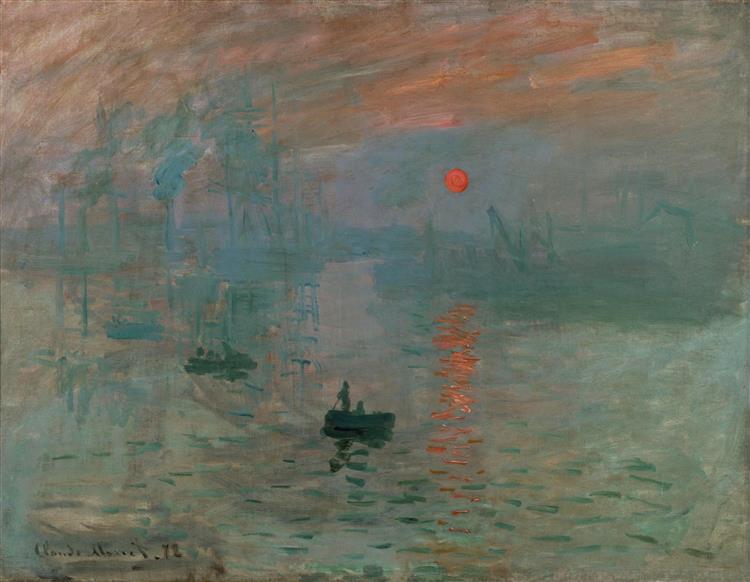The Table page displays a submission's general information and data using tabular layout. Ver vídeo
Información del envío
Número del envío: 1735
ID del envío: 1744
Submission UUID: c10f9875-a7d0-4eb2-940c-2829a72c79e2
Submission URI: /es/form/wizard-fichatraductologica
Created: Dom, 27/11/2022 - 00:39
Completed:
Changed: Dom, 27/11/2022 - 05:36
Remote IP address: (desconocido)
Enviado por: Cynthia jacqueline Ortiz
Idioma: Español
Is draft: Sí
Página actual: notas_para_la_traduccion
Form Ficha Terminológica: Ficha Traductológica
| Término | Impressionism |
|---|---|
| Idioma | Inglés (Estados Unidos) (214) |
| Área Especialidad | Humanidades y de las Artes (406) |
| Disciplina | Historia del Arte (488) |
| Temática | Vanguardias |
| Definición del término | Impressionism is a style of painting developed in France during the mid-to-late 19th century, from around 1874-1886. The Impressionist movement was founded by Paris-based artists Claude Monet, Pierre-Auguste Renoir, Alfred Sisley, Fédéric Bazille, Camille Pissarro, and Edgar Degas. The Impressionist painting style includes small, visible brushstrokes that offer an essential impression of form, unblended color, and an emphasis on accurately depicting natural light. Impressionist paintings were typically bright with bold colors and a contrasting color palette. |
| Fuente / Autor (del término) | Amy Meleca, M. A. (s/f). Cubism vs impressionism: Similarities and differences. Artlex.com. Recuperado el 27 de noviembre de 2022, de https://www.artlex.com/art-movements/cubism/cubism-vs-impressionism/ |
| Contexto del término | However, from the beginning of Impressionism, the expression of light and color also moved to a new height with various reasons. [...] Impressionism has gone through three periods: early, middle and late. The Impressionism of these three periods has the same characteristics, but also has their own characteristics. Under the influence of science and technology, Impressionist began to study the performance of external light, and moved painting from the studio to the outside. |
| Fuente / Autor (del contexto) | Jinjing, Y. (2021). The Breakthrough and Division of Color Language in Impressionist Painting. Frontiers in Art Research, 3(2). |
| Equivalente en español | impresionismo |
| Categoría gramatical | Nominal (221) |
| Información geográfica de la variante en español | México (Mex.) (192) |
| Definición del término en español | Corriente pictórica surgida en Francia en el siglo XIX y que busca representar los objetos según la impresión, condicionada por la luz, que en un momento dado producen a la vista, y no de acuerdo con la supuesta realidad objetiva. |
| Fuente / Autor (del término en español) | REAL ACADEMIA ESPAÑOLA: Diccionario de la lengua española, 23.ª ed., [versión 23.5 en línea]. <https://dle.rae.es> [27 de noviembre de 2022]. |
| Contexto del término en español | La obra de Monet y su excéntrico título ayudaron a dar nombre al Impresionismo y, por supuesto, para muchas personas es un ejemplo del Impresionismo en general. [...] el Impresionismo era el arte hecho por mujeres pintoras como Mary Cassatt y Berthe Morisot, y por artistas <<olvidados» como Jean-François Raffaelli y Norbert Goeneutte. |
| Fuente / Autor (del contexto en español) | Smith, P. J. (2006). Impresionismo - Bajo la superficie. Akal Ediciones. |
| Imagen |

|
| Fuente / Autor imagen | Externa |
| URL de la fuente (imagen) | https://www.artlex.com/art-movements/cubism/cubism-vs-impressionism/ |
| Video YouTube | nationalgalleries [@nationalgalleriesofscotland]. (2020, mayo 8). What is Impressionism? Art Movements & Styles. Youtube. |
| Fuente / Autor video | Externa |
| URL de la fuente (video) | https://youtu.be/HTOO-ukvs4g |
| Remision | |
| Comentarios | El cubismo y el impresionismo tienen muchas similitudes, siendo las tres más significativas el uso de pinceladas rotas y constructivas, el rechazo de las reglas estrictas de la pintura académica y el carácter representativo. |
